DS9
Planet, Class-M

Earth (ENT-78)
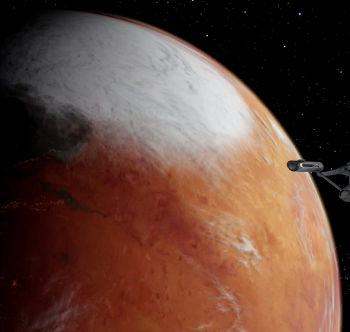
Vulcan (TOS-34)
Terrestrial. Age ranged from 3-10 billion years. Diameter was 10,000 to 15,000 km. Typically located in the Ecosphere of a planetary system. Surface water was abundant; if water or ice covered more than 80% of the surface, the planet was considered Class O or Class P. Atmosphere was primarily primarily nitrogen, oxygen, and trace elements. Contained extensive vegitation and animal life.[8] Capable of supporting carbon-based, humanoid life.[1]
The designation apparently stemmed from the Vulcan word “Minshara,” which was used to designate planets capable of supporting life.[7] Class-M planets could vary widely in color, cloud cover, and overall appearance. Most Class-M planets were characterized by a relatively thin, tectonically active crust floating on a molten rock mantle, which in turn surrounded a liquid metal outer core and a solid inner core composed of metal crystals.
› Continue reading
Planet, Class-K
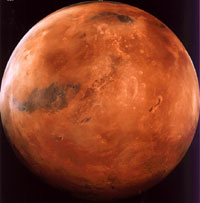
Mars (STSC)

Mudd (TOS-41)
Adaptable. Age ranged from 4-10 billion years. Diameter was 5000 to 10,000 km. Typically located in the Ecosphere of a planetary system. Surface was barren, with little or no surface water, atmosphere was thin and mostly carbon dioxide. Adaptable for humanoid colonization through the use of pressure domes and terraforming. May contain primitive single-celled organisms.[1]
Class-K Planets:
References
Planet, Class-J
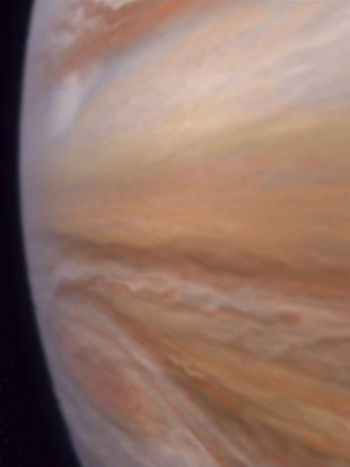
Jupiter (ENT-50)
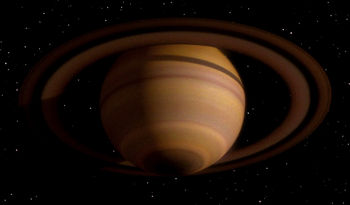
Saturn (TNG-101-102)
Gas giant. Age ranges from 2-10 billion years. Diameter is 50,000 to 140,000 km. Typically located in the Cold Zone of a planetary system. Surface radiates some heat and is tenuous and comprised of gaseous hydrogen and hydrogen compounds, atmospheric zones vary in temperature, pressure and composition. May contain hydrocarbon-based life forms.[1]
References
- 1. Star Trek Star Charts. Book. Pocket Books. October 2002.
Planet, Class-D
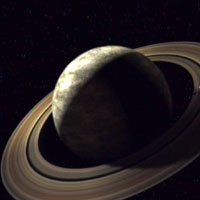
Class-D Planet (VOY-109)
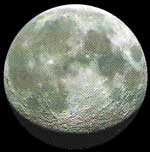
Moon (STSC)
Asteroid/Moon. Age ranged from 2-10 billion years. Diameter was 100 to 1000 km. Typically located in the Hot Zone, Ecosphere or Cold Zone of a planetary system, primarily in orbit of larger planets or in asteroid belts. Surface was barren and cratered, atmosphere was nonexistent or extremely tenuous. No native life forms.[1]
Class-D Planets:
References
Hutet
Class-M home to the Hutet Labor Camp, where Major Kira and Chief O’Brien rescued the dozen or so Bajoran prisoners of war still being held there, including Li Nalas.[1]
References
Comet, Rogue
A large mass of ice and ionized gas, with a large concentration of silithium, detected near the Gamma Quadrant side of the Bajoran Wormhole and not attached to the gravity field of any one star system. Due to the silithium which could cause a cascade reaction, its impact with the wormhole due to gravimetric surges after a premature opening would have caused a permanent collapse of the Prophets‘ tunnel.[1]
References
Clarus System
Star system home to one or more sites of the profitable Arcybite mining refineries taken over by the Ferengi Nava shortly before Zek‘s Gamma Quadrant conference of 2369.[1]
References
Chamra Vortex
An uncharted nebula in the Rakhari sector of the Gamma Quadrant where Croden claimed to have found a Changeling colony and shapeshifting stone on one of its millions of asteroids; actually, it was merely where he hid his daughter in stasis after his family was murdered. Full of volatile Toh-Maire gas pockets and sensor-shielding ionized gases, it lay between the wormhole opening and Rakhar.[1]
References
Cestus III
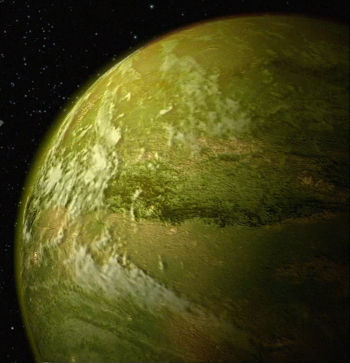
Cestus III (TOS-19)
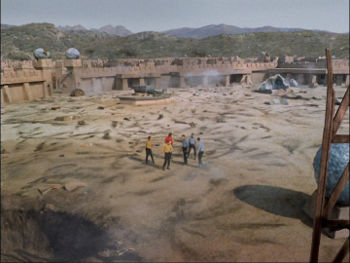
Cestus Surface III (TOS-19)
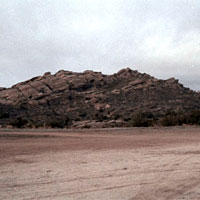
Cestus Surface III (TOS-19)
A world under dispute by the United Federation of Planets and the Gorn Hegemony in 2366,[1] it was the site of a Federation colony and the sport of baseball’s revival by the late 24th century. Located on the far side of the Federation from >Deep Space Nine, a subspace transmission alone took two weeks, and travel by ship took eight weeks at maximum warp. One community on the planet was Pike City, where Kasidy Yates‘ youngest brother lived and played on the local baseball team, the Pike City Pioneers.[1]
References
Carraya IV

Carraya IV (TNG-243)
A jungle world on the edge of Romulan space, about three hours at an unspecified warp speed from Deep Space Nine, which was the site of a secret camp for 73 reluctant Klingon survivors of the Khitomer massacre in 2346.[1]
References
Categories
- Animated Series (60)
- Articles (28)
- Books (447)
- Cast & Crew (79)
- Comics (22)
- DS9 (328)
- Early Voyages (125)
- Education (5)
- Enterprise (373)
- Excelsior (36)
- Food (19)
- Games (223)
- Klingon (70)
- Library (1,543)
- Logs (593)
- Lost Era (55)
- Medicine (18)
- Merrimac (1)
- Mirror (35)
- Miscellaneous (13)
- New Frontier (54)
- Next Generation (635)
- Original Series (681)
- Personnel (436)
- Places (369)
- Politics (12)
- Recreation (10)
- SCE (41)
- Science (1)
- Shatnerverse (9)
- Ships (455)
- Site Updates (98)
- Starfleet Academy (86)
- Stargazer (42)
- STO (61)
- Technology (45)
- Titan (59)
- To Boldly Go (1)
- TV/Film (214)
- Uncategorized (4)
- Vanguard (76)
- Voyager (236)
- Weapons (27)
- Xenology (54)